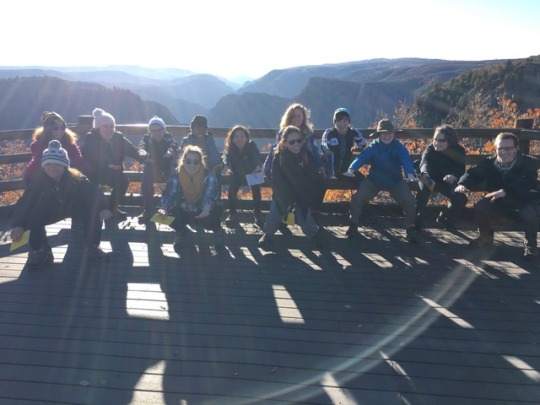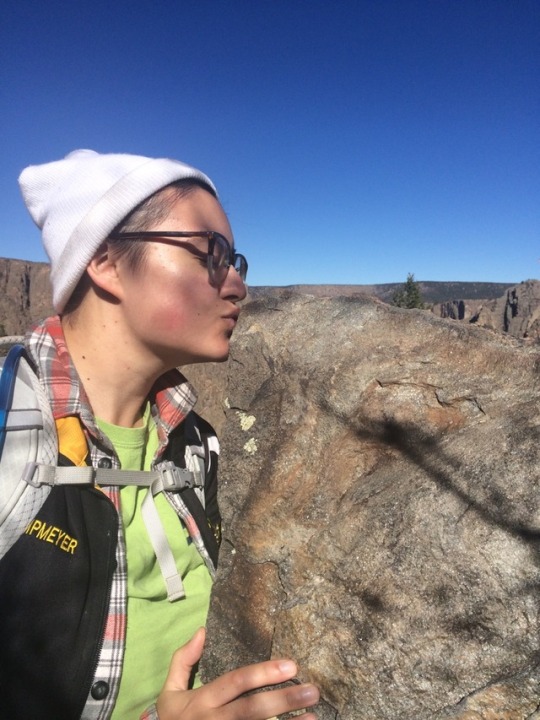We set out from Kayenta, AZ, at 8:30 am, our bellies full of biscuits, warm gravy, and a mixed-fruit cocktail. The three cars of our rockin’ caravan— Carlo, Cartherine, and Pedrover (can you guess who the drivers were?)—set off to the West, bound for the Grand Canyon.
Just as we made our way out of the Diné Nation, passing through yet another time-zone shift (Arizona does not conform to Daylight Savings, so we are now on Pacific Standard Time), we stopped in the parking lot of a roadside tire shop, next to a large monocline, to talk about the Laramide Orogeny!
On either side of the road, the rock beds started out horizontally, dipping sharply to the East in between. Deep Precambrian faults underneath the rock were reactivated during the Laramide. Since these faults were far below the surface, they caused the existing geological beds to fold along one axis (mono- “one” + cline “fold”), rather than breaking them cleanly.
The rest of our talk was focused on the model of flat-slab subduction as the driving force behind the characteristic effects of the Laramide. In a typical subduction zone, one tectonic plate slides and quickly sinks beneath another plate as the two collide. In the case of the Laramide, present models—based on data related to magmatism, mineral hydration, and the types of physiographic uplifts associated with the Laramide (like the monocline-type folds we were looking at here!)—suggest that the sinking Farallon plate was more buoyant than typical subducting plates, causing it to continue to slide along the bottom of the overriding North American plate before eventually sinking. For frame of reference, all of this was taking place roughly between 80 and 40 mya (million years ago).
In addition to the members of our group, several dogs trotted up and attended our presentation, much to Arlo’s chagrin.


Anticipating a long midday drive, we scheduled in a couple of pit stops along the way. We dropped in first at the historic Cameron Trading Post, allowing folks to pick up some souvenirs, fill up on water and snacks, and mail a variety of letters and postcards we had acquired throughout the first half of the week.
Next, we stopped at a beautiful overlook above the Little Colorado River. We spent some time observing the rocks on the overlook itself (dolostone, indicative of a shallow marine original environment… which is now several thousand feet above sea level!), as well as looking out into the canyon to compare the stratigraphy to what we had seen before and what we were expecting to see later in the day at the Grand Canyon. Just up the hill, we dropped in on some local artisans’ shops before a picnic lunch overlooking the canyon.

The overlook was adorned with a couple of particularly fun signs:


And then, on to the Grand Canyon!


